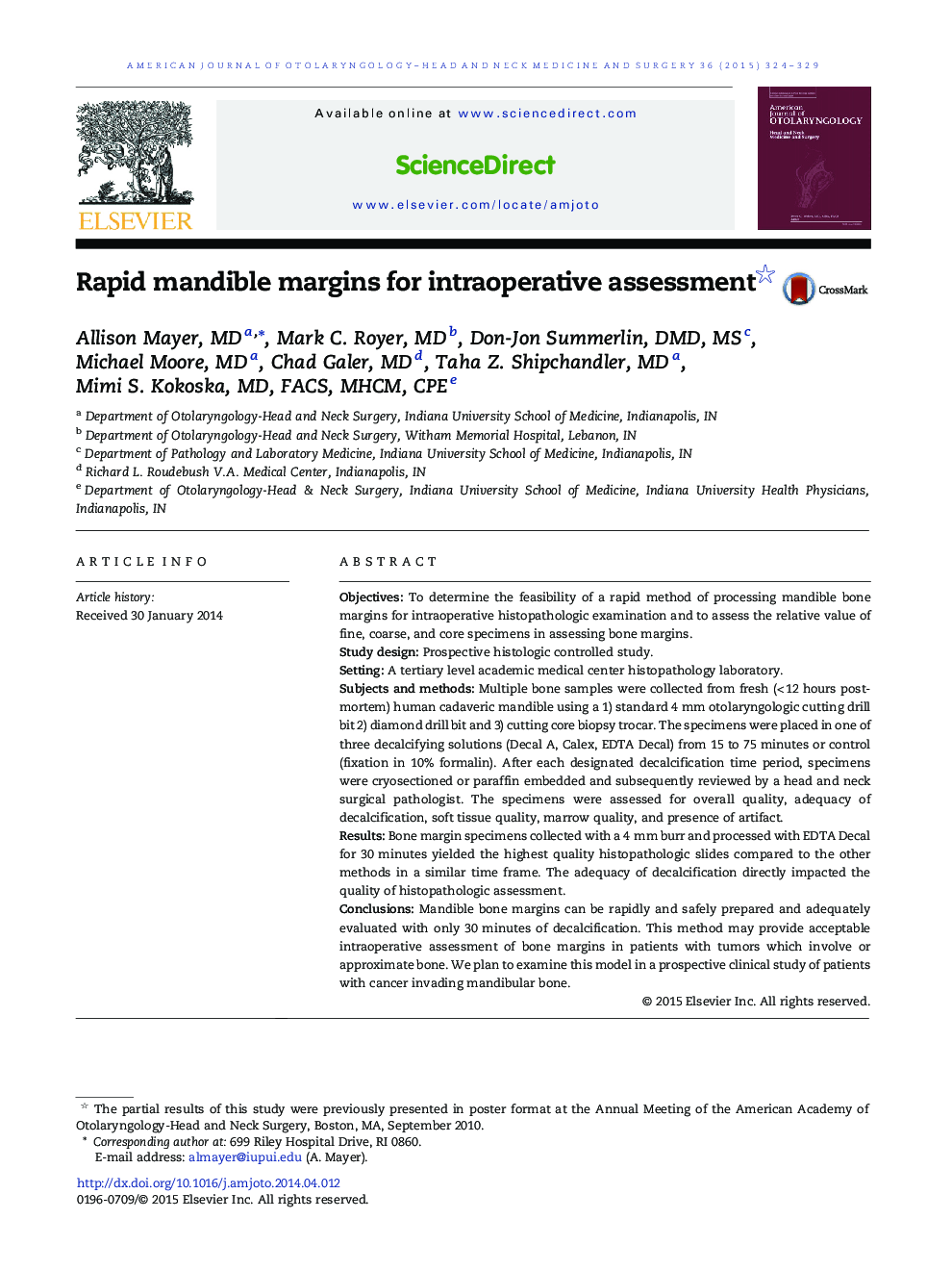| Article ID | Journal | Published Year | Pages | File Type |
|---|---|---|---|---|
| 4103528 | American Journal of Otolaryngology | 2015 | 6 Pages |
ObjectivesTo determine the feasibility of a rapid method of processing mandible bone margins for intraoperative histopathologic examination and to assess the relative value of fine, coarse, and core specimens in assessing bone margins.Study designProspective histologic controlled study.SettingA tertiary level academic medical center histopathology laboratory.Subjects and methodsMultiple bone samples were collected from fresh (< 12 hours post-mortem) human cadaveric mandible using a 1) standard 4 mm otolaryngologic cutting drill bit 2) diamond drill bit and 3) cutting core biopsy trocar. The specimens were placed in one of three decalcifying solutions (Decal A, Calex, EDTA Decal) from 15 to 75 minutes or control (fixation in 10% formalin). After each designated decalcification time period, specimens were cryosectioned or paraffin embedded and subsequently reviewed by a head and neck surgical pathologist. The specimens were assessed for overall quality, adequacy of decalcification, soft tissue quality, marrow quality, and presence of artifact.ResultsBone margin specimens collected with a 4 mm burr and processed with EDTA Decal for 30 minutes yielded the highest quality histopathologic slides compared to the other methods in a similar time frame. The adequacy of decalcification directly impacted the quality of histopathologic assessment.ConclusionsMandible bone margins can be rapidly and safely prepared and adequately evaluated with only 30 minutes of decalcification. This method may provide acceptable intraoperative assessment of bone margins in patients with tumors which involve or approximate bone. We plan to examine this model in a prospective clinical study of patients with cancer invading mandibular bone.
